Chapter 15: How to Conquer Torts on the California Bar Exam
 Torts on the California Bar Exam
Torts on the California Bar Exam
Torts is regularly tested on the California Bar Exam. The California examiners often test Torts in particular ways.
Here, we tell you how to approach Torts on the California Bar Exam, including some of the highly tested issues in Torts questions.
Torts on the California Bar Exam
1. First, know how Torts is tested.
California has virtually always tested general law (rather than California law) on Torts essay questions. Torts is tested about once every year-and-a-half now. Since it is tested relatively frequently, you should be aware of the highly tested Torts issues.
Torts is usually tested on its own but is occasionally combined with other subjects. For example, in February 2017, Torts was combined with Remedies. And in July 2009, Torts was combined with Civil Procedure and Professional Responsibility.
Real Property questions also occasionally test nuisance, which is a Torts issue, even though it is not labeled as a Torts question by the California examiners. For example, nuisance was tested in July 2023, February 2018, February 2012, and February 2007.
2. Be aware of the highly tested issues.
The California Bar Exam tests certain issues frequently in Torts questions. (We have a nice summary of these in our California Bar Exam One-Sheets.)
Some of the most highly tested Torts issues on the essay portion of the California Bar Exam include the following:
- Negligence: This is, by far, the most highly tested Torts issue! Within negligence, premises liability is tested very frequently, with the standard of care owed to invitees being tested the most. Remember that the standard of care the premise possessor owes depends on the legal status of the plaintiff.
- Undiscovered trespasser: an undiscovered trespasser is not owed any duty of care.
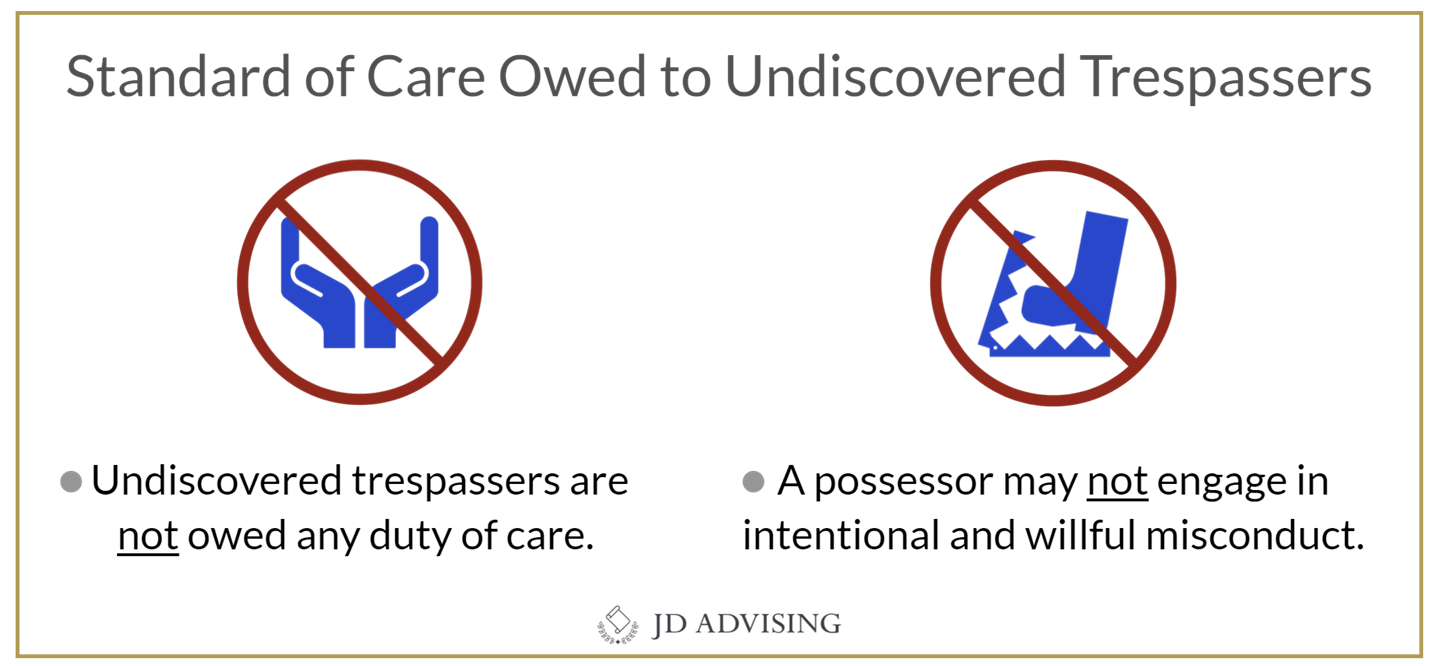
-
- Discovered trespasser: the premises possessor must warn or make safe any unreasonably dangerous, concealed, artificial (man-made) conditions that the premises possessor knows of.
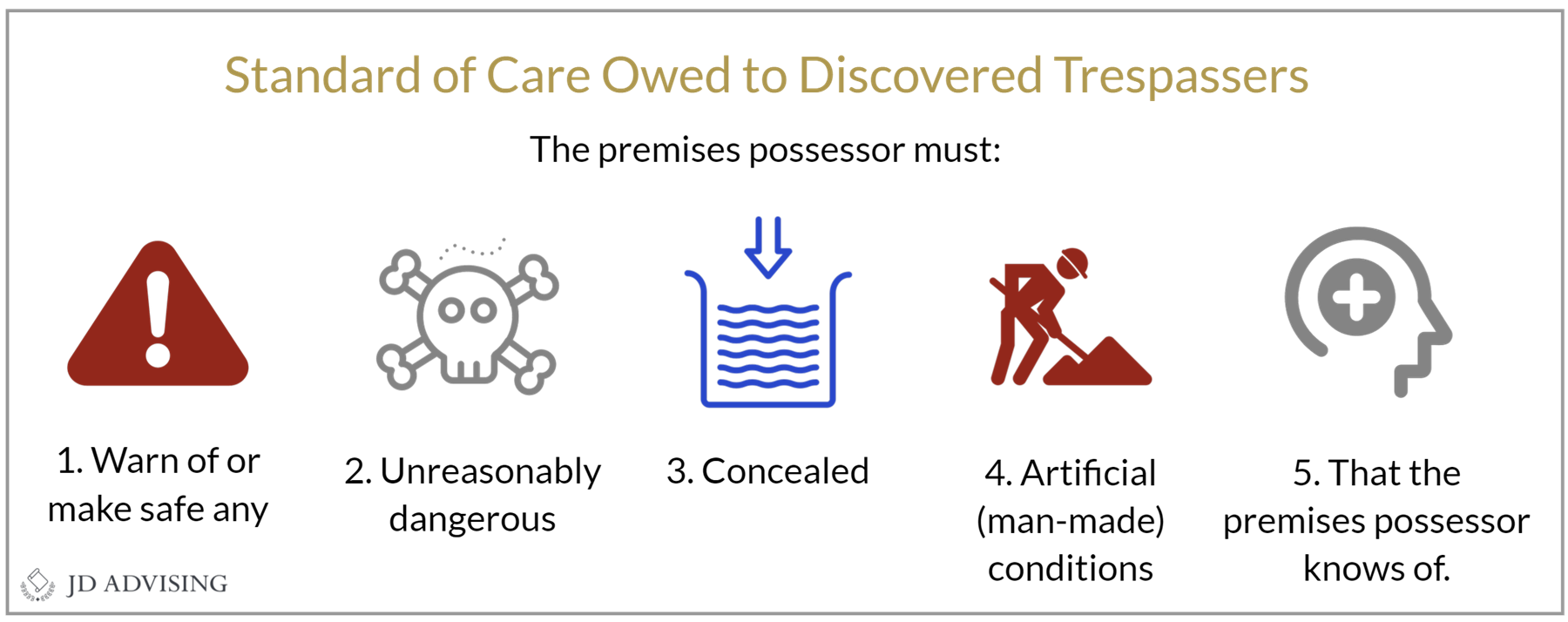
-
- Licensee (e.g., a social guest): the premises possessor must warn or make safe all concealed dangers that the premises possessor knows of.
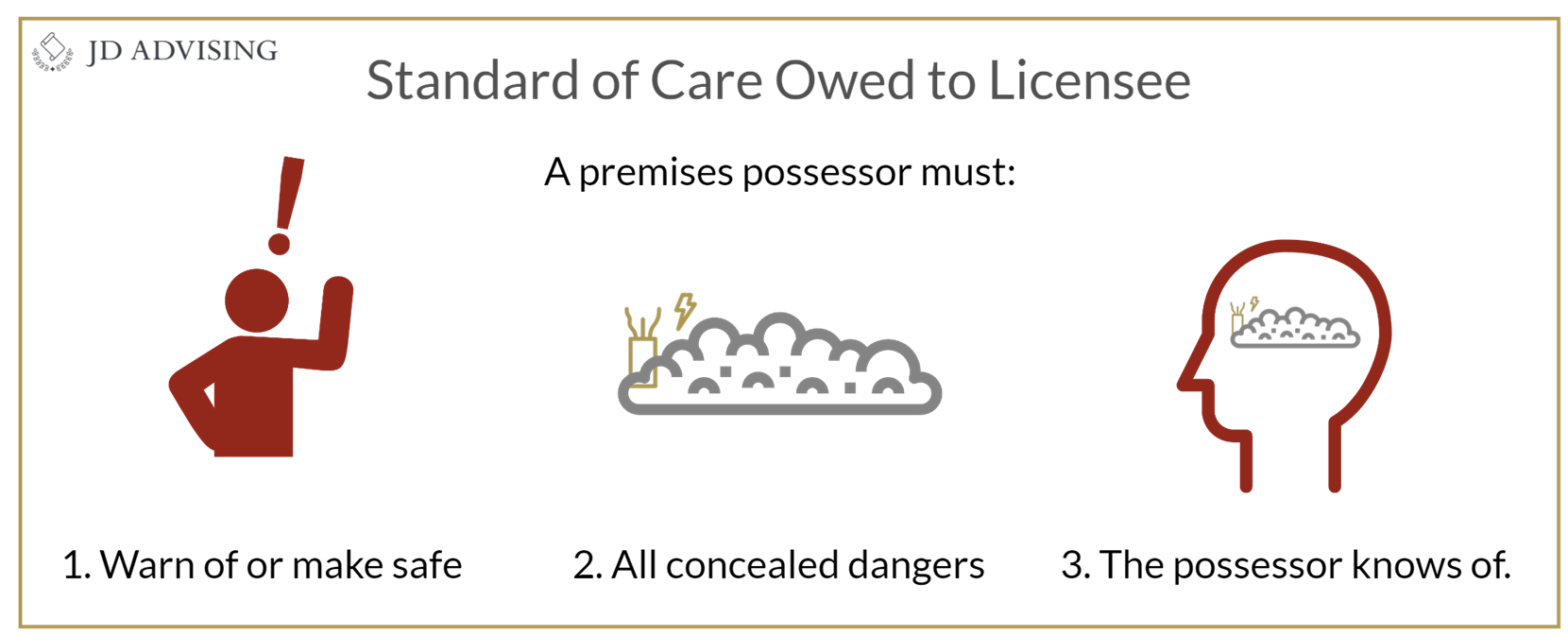
-
- Invitee (one that enters land to confer an economic benefit or enters land open to the public at large): the premises possessor must warn or make safe all dangers that the premises possessor knows or should know of.

- Negligence per se: A plaintiff may sue under a theory of negligence per se when the plaintiff can show that (1) the defendant violated a statute without excuse, (2) the plaintiff was in the class of people the statute aimed to protect, and (3) the plaintiff received the injury that the statute aimed to prevent. If the plaintiff can show these factors, he has established duty and breach (but still must prove causation and harm).
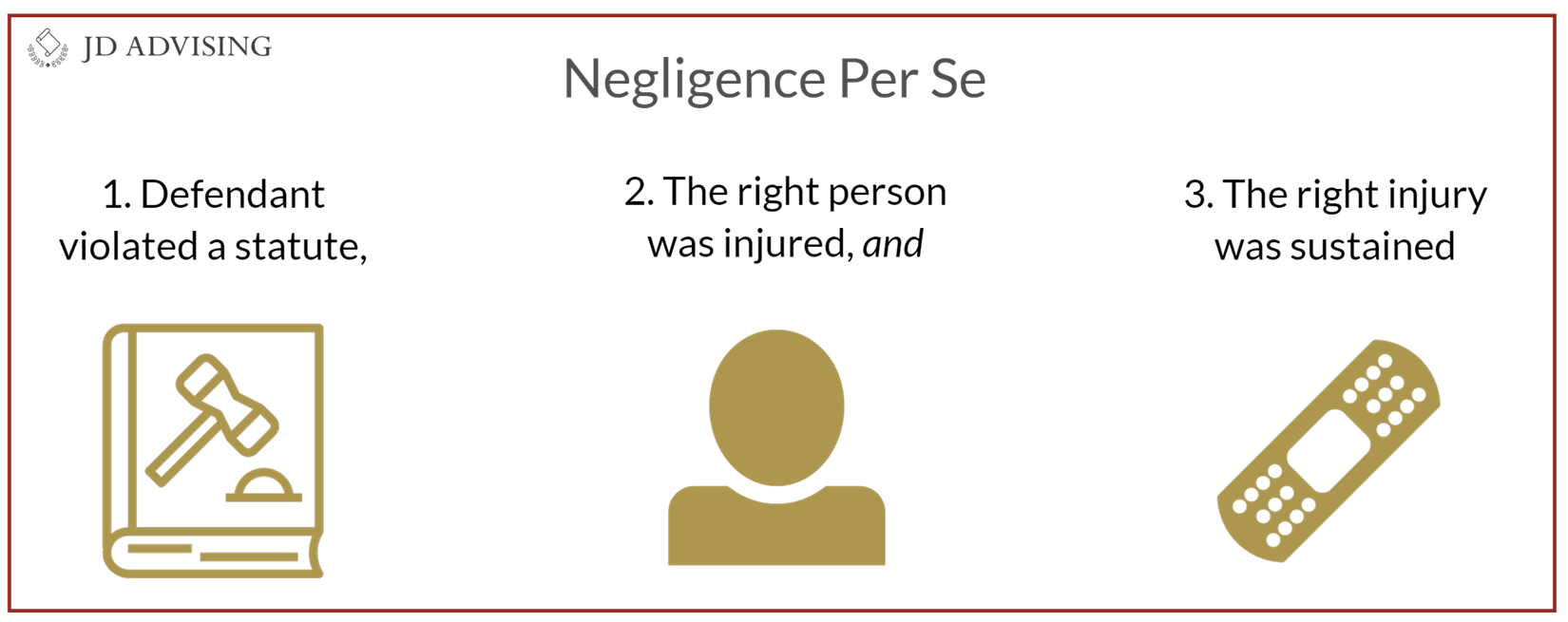
- Intentional torts: These are only occasionally tested. Battery, assault, false imprisonment, trespass, conversion, and intentional infliction of emotional distress (IIED) are some intentional torts that have appeared on past Torts essays.
- Products liability: Products liability occasionally is tested. Design defect is the most commonly tested topic. In a design defect case, the product came out exactly as the manufacturer intended. However, there is an alternative design that is safer, practical, and cost-effective.
- Nuisance: As noted above, nuisance has been tested in the past on Real Property essays. For a private nuisance, a plaintiff must show that there is a substantial, unreasonable interference with the plaintiff’s use or enjoyment of her property.
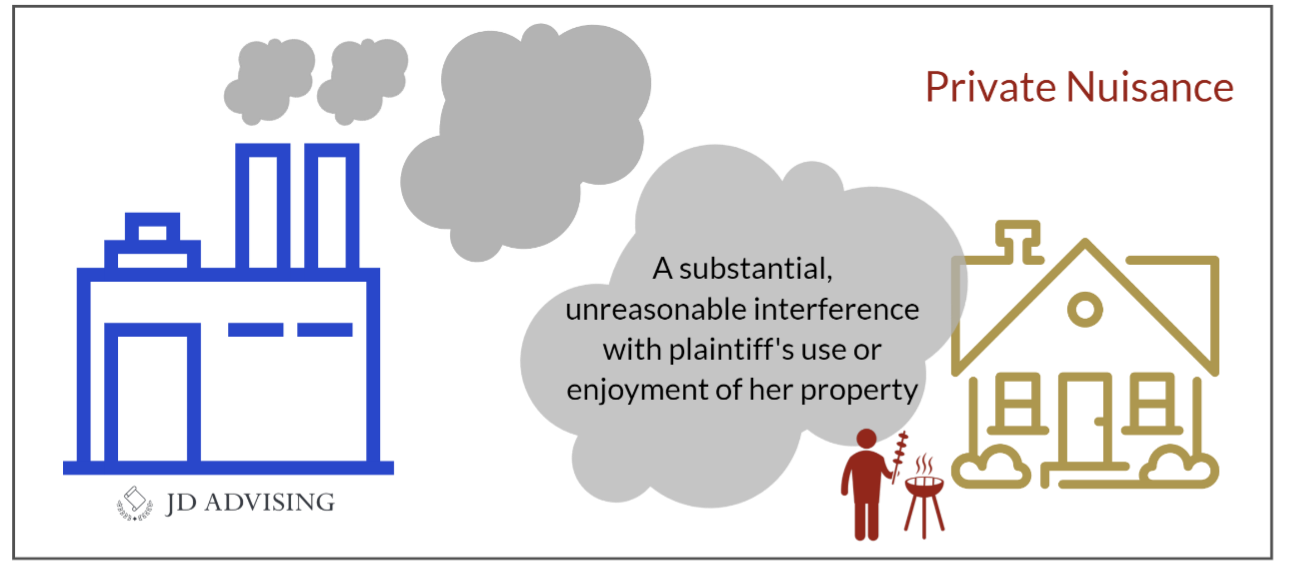
-
- For a public nuisance, the plaintiff must show that an act unreasonably interferes with the health, safety, or morals of a community, and that the plaintiff suffered unique damages.

3. Be aware of how to approach highly tested Torts topics.
If you look over past Torts essay questions, you will see some patterns.
For example:
- When addressing a negligence issue, mention defenses to negligence in your answer. These are contributory negligence, assumption of risk, and comparative negligence. Although contributory negligence is a common law doctrine that most states have moved abolished, you should still mention it!
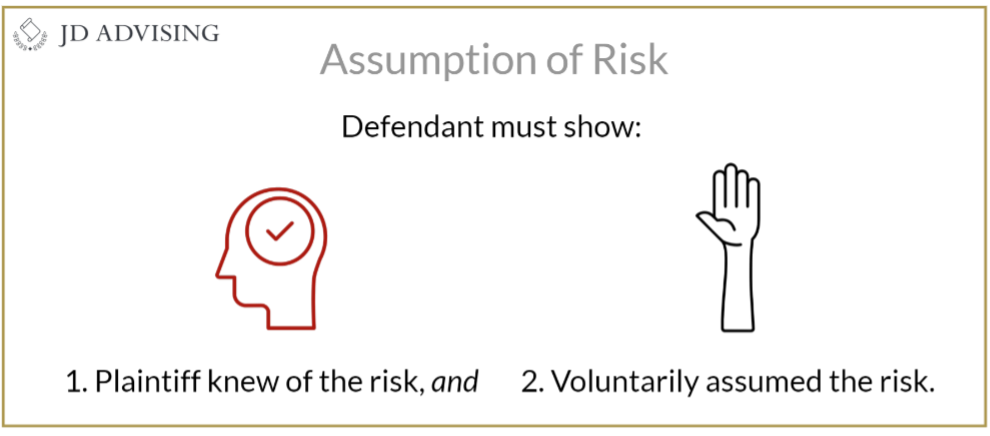
- When addressing a products liability issue, you should analyze both strict products liability and negligent products liability (e.g., discuss duty, breach, cause, and harm). Although many students discuss only strict products liability, you can earn additional points for mentioning negligent products liability as well!

Having a general approach for what the examiners expect to see when certain issues are tested will help maximize your score on a Torts essay question.
4. Focus on negligence.
Negligence is the most tested topic in Torts on the California Bar Exam essay portion. It is also the most tested topic on the MBE portion of the bar exam (with 12 to 13 multiple-choice questions covering negligence!). So, focus a lot of study time on negligence. If you have an essay question on negligence, you can earn a lot of points because you can apply that knowledge additionally to the 12 to 13 MBE negligence questions. Dedicating a lot of time to making sure you have mastered negligence is a key way to study efficiently for the California Bar Exam.
5. Practice!
The best way to get good at Torts essay questions is to practice writing answers to essays. This will help you become acquainted with how Torts is tested and will help you to master the highly tested issues.
Here are a few essay questions with student answers that we recommend you practice to get exposed to some highly tested topics in Torts essay questions:
- February 2019 Torts essay: this essay covers strict liability, negligence, premises liability, contributory negligence, comparative negligence, and assumption of the risk (see essay question #2 on the exam).
- July 2017 Torts essay: this essay covers negligence, negligence per se, defenses to negligence, strict liability, and joint and several liability (see essay question #5 on the exam).
- February 2016 Torts essay: this essay covers assault, battery, IIED, trespass to land, trespass to chattels, conversion, and defenses to intentional torts (see essay question #2 on the exam).
- July 2014 Torts essay: this essay covers negligence, premises liability, negligence per se, vicarious liability, and direct liability of a principal (see essay question #6 on the exam).
Good luck studying for the California Bar Exam!
Go to the next topic, Chapter 16: Trusts.
Looking to Pass the California Bar Exam?
📚 Ready to Conquer the California Bar Exam?
- Free Bar Exam Resource Center: Your gateway to handpicked guides, webinars, and articles.
- Expert-Written Bar Exam Guides: Get a CA bar exam essay guide, strategies for passing, and advice on choosing the ideal tutor.
Top Resources Recommended by our Students:
- Bar Exam Outlines: Our comprehensive and condensed bar exam outlines present key information in an organized, easy-to-digest layout.
- California One-Sheets and Baby Bar One-Sheets: Consistently 5-star rated by our students.
- California Essay Exam Mastery Class: Target the most tested and challenging California bar segments.
- California and Baby Bar Exam Private Tutoring: Get personalized tutoring by bar exam experts.
- On Demand Bar Exam Course: 5-star rated for your comprehensive preparation. Free course preview available!
- Real MBE Questions: Perfect your practice with the best of practice materials.
🔥 NEW! Check out our Repeat Taker Bar Exam Course and our unrivaled platinum Guarantee Pass Program!




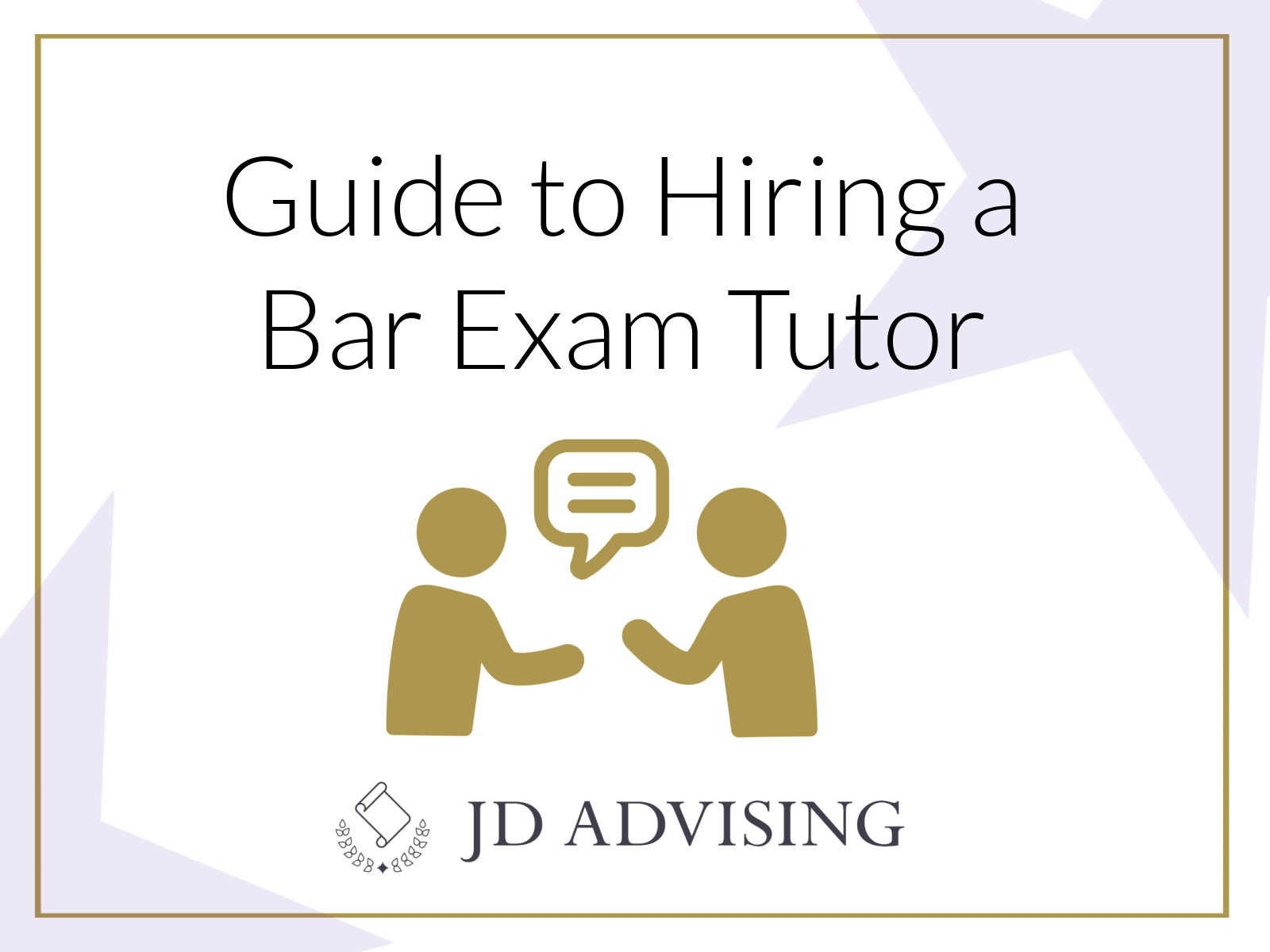

Leave a Reply
Want to join the discussion?Feel free to contribute!